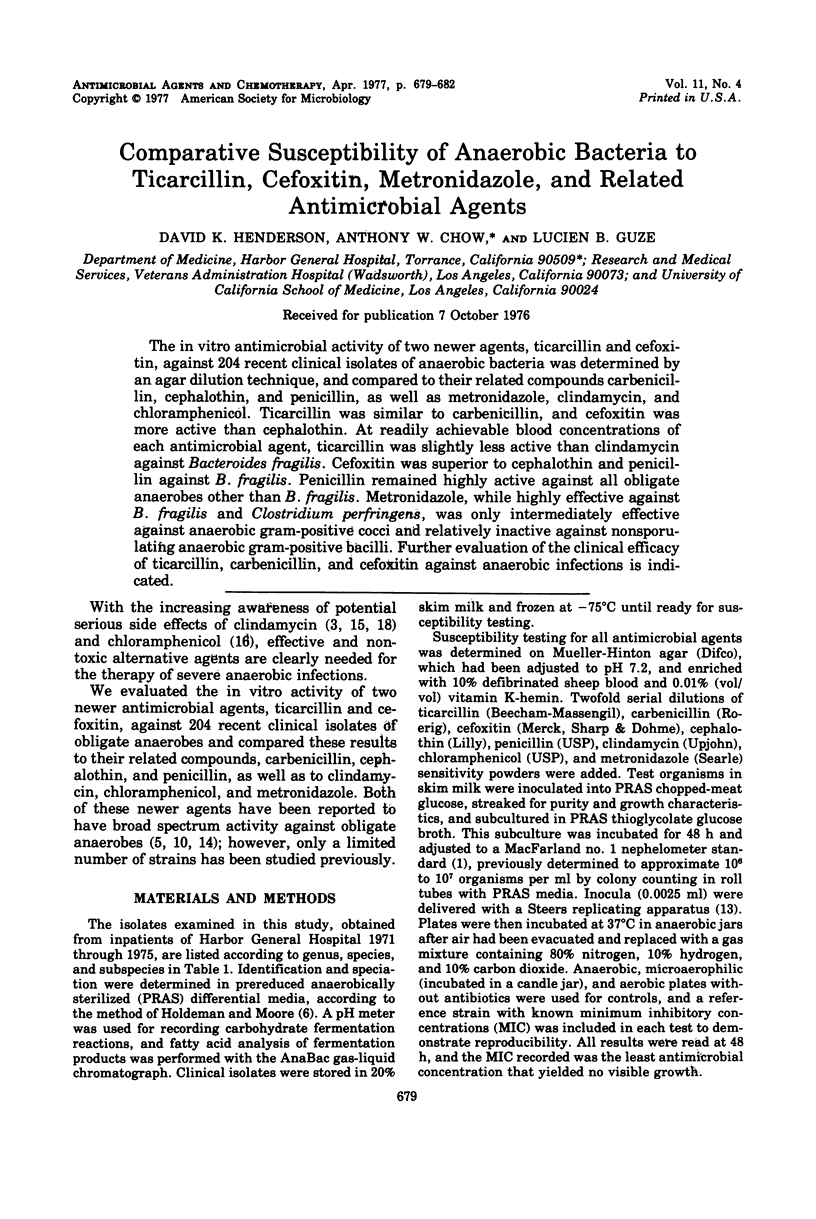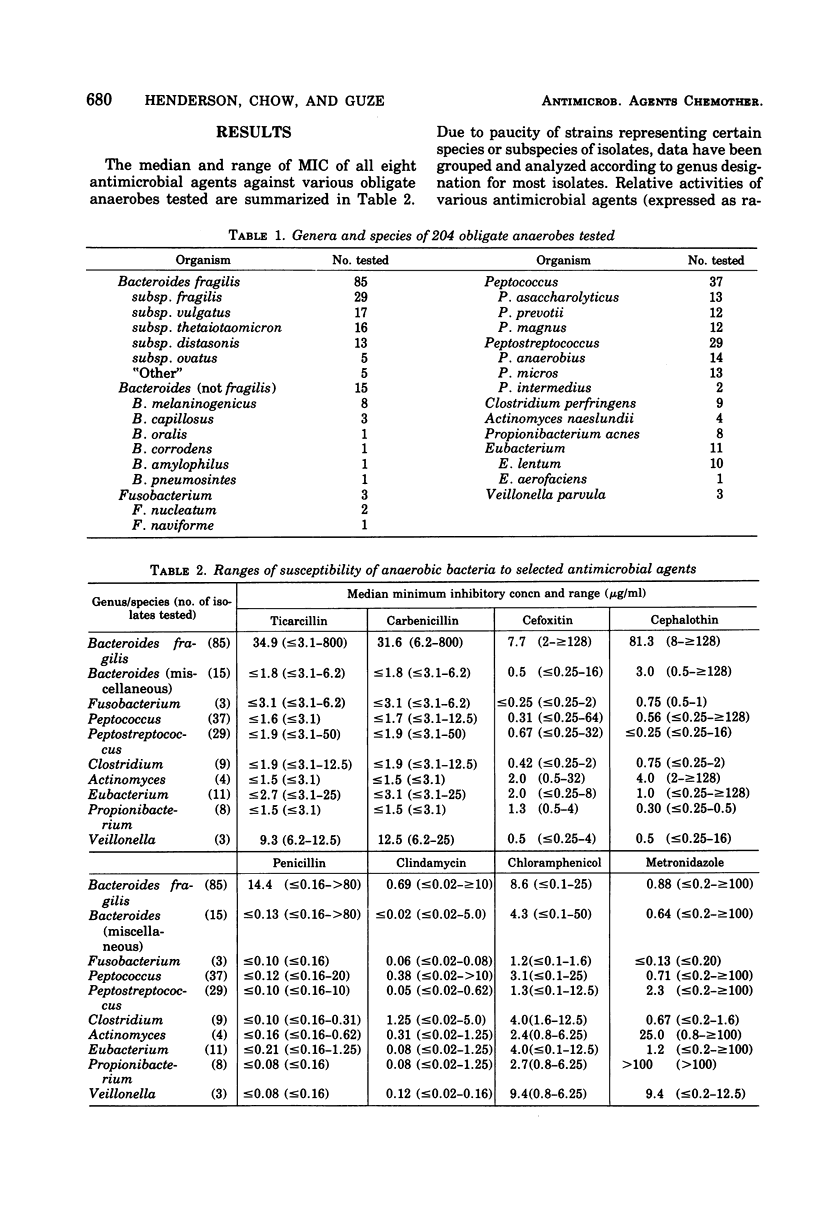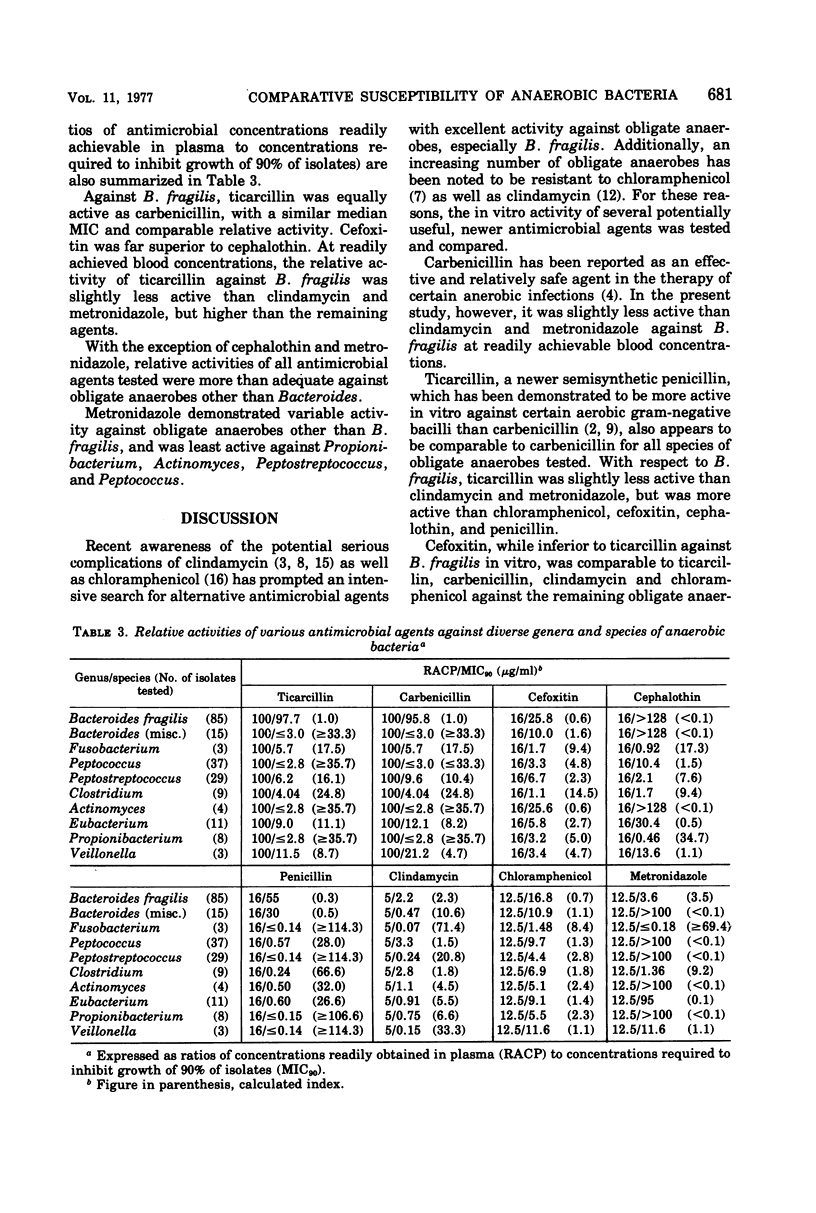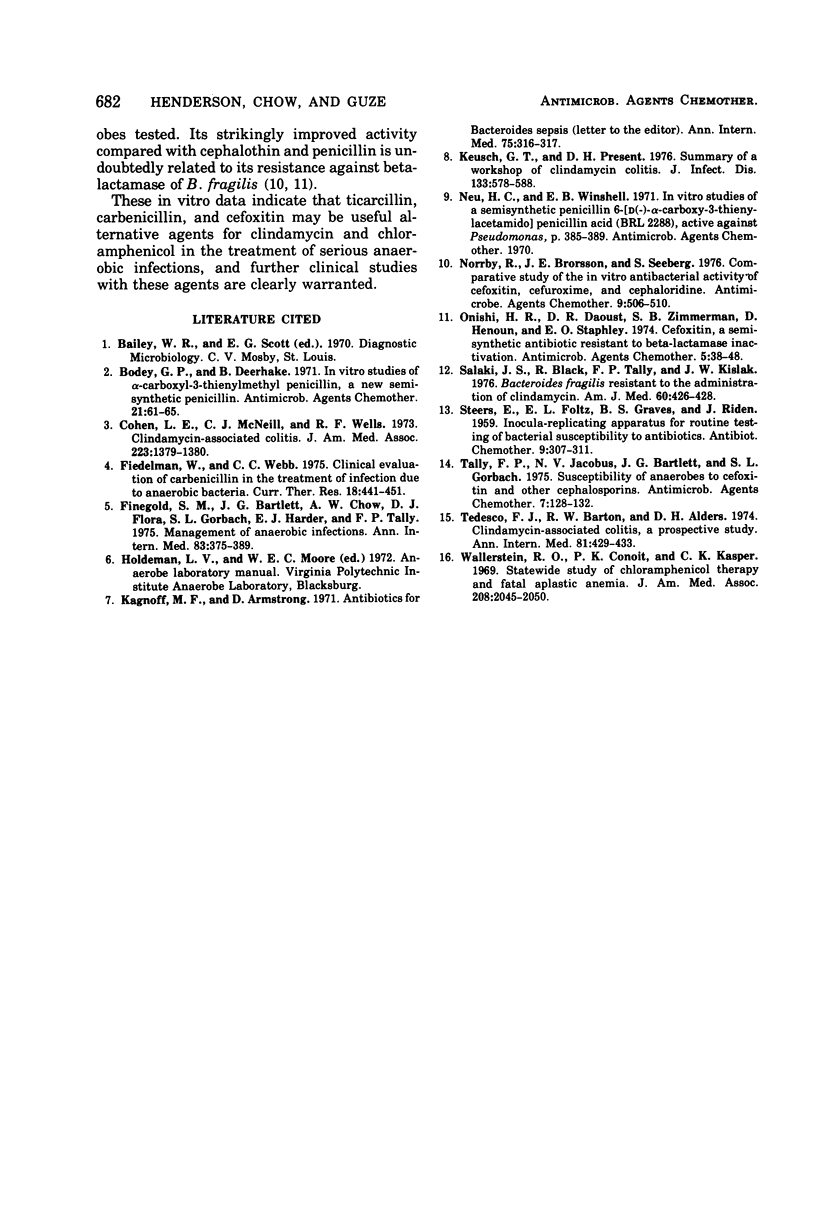Abstract
The in vitro antimicrobial activity of two newer agents, ticarcillin and cefoxitin, against 204 recent clinical isolates of anaerobic bacteria was determined by an agar dilution technique, and compared to their related compounds carbenicillin, cephalothin, and penicillin, as well as metronidazole, clindamycin, and chloramphenicol. Ticarcillin was similar to carbenicillin, and cefoxitin was more active than cephalothin. At readily achievable blood concentrations of each antimicrobial agent, ticarcillin was slightly less active than clindamycin against Bacteroides fragilis. Cefoxitin was superior to cephalothin and penicillin against B. fragilis. Penicillin remained highly active against all obligate anaerobes other than B. fragilis. Metronidazole, while highly effective against B. fragilis and Clostridium perfringens, was only intermediately effective against anaerobic gram-positive cocci and relatively inactive against nonsporulating anaerobic gram-positive bacilli. Further evaluation of the clinical efficacy of ticarcillin, carbenicillin, and cefoxitin against anaerobic infections is indicated.
Full text
PDF



Selected References
These references are in PubMed. This may not be the complete list of references from this article.
- Bodey G. P., Deerhake B. In vitro studies of alpha-carboxyl-3-thienylmethyl penicillin, a new semisynthetic penicillin. Appl Microbiol. 1971 Jan;21(1):61–65. doi: 10.1128/am.21.1.61-65.1971. [DOI] [PMC free article] [PubMed] [Google Scholar]
- Cohen L. E., McNeill C. J., Wells R. F. Clindamycin-associated colitis. JAMA. 1973 Mar 19;223(12):1379–1380. [PubMed] [Google Scholar]
- Fiedelman W., Webb C. D. Clinical evaluation of carbenicillin in the treatment of infection due to anaerobic bacteria. Curr Ther Res Clin Exp. 1975 Sep;18(3):441–451. [PubMed] [Google Scholar]
- Finegold S. M., Bartlett J. G., Chow A. W., Flora D. J., Gorbach S. L., Harder E. J., Tally F. P. Management of anaerobic infections. Ann Intern Med. 1975 Sep;83(3):375–389. doi: 10.7326/0003-4819-83-3-375. [DOI] [PubMed] [Google Scholar]
- Kagnoff M. F., Armstrong D. Antibiotics for bacteroides sepsis. Ann Intern Med. 1971 Aug;75(2):316–317. doi: 10.7326/0003-4819-75-2-316_2. [DOI] [PubMed] [Google Scholar]
- Keusch G. T., Present D. H. Summary of a workshop on clindamycin colitis. J Infect Dis. 1976 May;133(5):578–587. doi: 10.1093/infdis/133.5.578. [DOI] [PubMed] [Google Scholar]
- Norrby R., Brorsson J. E., Seeberg S. Comparative study of the in vitro antibacterial activity of cefoxitin, cefuroxine, and cephaloridine. Antimicrob Agents Chemother. 1976 Mar;9(3):506–510. doi: 10.1128/aac.9.3.506. [DOI] [PMC free article] [PubMed] [Google Scholar]
- Onishi H. R., Daoust D. R., Zimmerman S. B., Hendlin D., Stapley E. O. Cefoxitin, a semisynthetic cephamycin antibiotic: resistance to beta-lactamase inactivation. Antimicrob Agents Chemother. 1974 Jan;5(1):38–48. doi: 10.1128/aac.5.1.38. [DOI] [PMC free article] [PubMed] [Google Scholar]
- Salaki J. S., Black R., Tally F. P., Kislak J. W. Bacteroides fragilis resistant to the administration of clindamycin. Am J Med. 1976 Mar;60(3):426–428. doi: 10.1016/0002-9343(76)90759-2. [DOI] [PubMed] [Google Scholar]
- Tally F. P., Jacobus N. V., Bartlett J. G., Gorbach S. L. Susceptibility of anaerobes to cefoxitin and other cephalosporins. Antimicrob Agents Chemother. 1975 Feb;7(2):128–132. doi: 10.1128/aac.7.2.128. [DOI] [PMC free article] [PubMed] [Google Scholar]
- Tedesco F. J., Barton R. W., Alpers D. H. Clindamycin-associated colitis. A prospective study. Ann Intern Med. 1974 Oct;81(4):429–433. doi: 10.7326/0003-4819-81-4-429. [DOI] [PubMed] [Google Scholar]
- Wallerstein R. O., Condit P. K., Kasper C. K., Brown J. W., Morrison F. R. Statewide study of chloramphenicol therapy and fatal aplastic anemia. JAMA. 1969 Jun 16;208(11):2045–2050. [PubMed] [Google Scholar]


